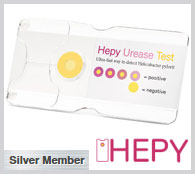Whole Organ Bioreactor Cultures Tissue-Engineered Esophagus, and Blood Vessels
By LabMedica International staff writers
Posted on 03 Nov 2010
A three-dimensional (3D) whole organ bioreactor rotates and is designed for cell seeding and culturing on both surfaces of a tubular matrix. Posted on 03 Nov 2010
The Harvard Apparatus InBreath Whole Organ Bioreactor is a hollow organ 3D reactor system that is suitable for esophagus, trachea, intestines, blood vessels, and virtually any hollow organ. Harvard Apparatus (Holliston, MA, USA) in conjunction with Dr. Paolo Macchiarini, head and chairman of the Hospital Clínic (Barcelona Metro) de Barcelona, University of Barcelona (Spain) has developed the InBreath Whole Organ Bioreactor. Dr. Macchiarini first published his findings with the bioreactor in the journal the Lancet, December 13, 2008. The InBreath is world's first commercially available bioreactor for tubular organ regeneration. The unit is precision engineered for cell seeding and culturing on both intraluminal and extraluminal surfaces of a tubular matrix.
An autoclavable polymer-based culture chamber houses the scaffold and culture medium for the entire duration of the organ generation procedure. An organ scaffold is mounted to the corresponding scaffold holder of appropriate diameter. Each holder features a reduced diameter central portion that functions to expose the luminal surface of the matrix for cell seeding and culturing. Secondary elements (paddles) moving with the scaffold holder, produce continuous mixing of the culture medium to increase oxygenation and mass transport.
The cell/scaffold construct is rotated on the holder by a brushless DC motor (0 rpm - 5 rpm adjustable) that is completely separated from the culture compartment. A coaxial conduit links the inner chamber to the external environment through an interface at the chamber wall. The detachable connection between the motor unit and the culture chamber allows the latter to be removed for maintenance while the motor unit remains stationed in the incubator. An external control unit regulates and monitors rotation.
Autoclavability, ease of handling under sterile conditions, effectiveness, and precision ensures full compatibility of the device with good laboratory practice (GLP) rules.
Harvard Apparatus also has electrofusion, femtomole cell injectors, and ventilation and anesthesia products to advance cell and tissue engineering experimentation.
Related Links:
Harvard Apparatus













